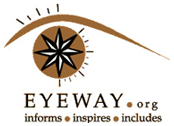The disabled (as defined by the 1995 Persons with Disabilities Act) are roughly 2.21 per cent of the population as per the 2011 Census. If the elderly are included (another 6 per cent), it is a huge, and almost totally untapped market, but one which Indian enterprise doesn’t seem to be keen to tackle.
Aiding access
In more advanced economies, technology has played an increasingly larger role in helping Persons with Disabilities (PwDs) access the world on even terms. In India however, even when advances have been made-innovative wheelchairs designed in the IITs, for instance—they have yet to find their way to market.
Software solutions are more promising, especially with the smartphone opening up many possibilities for the visually- and hearing-impaired.
Phone operating systems by US-based global majors like Apple and Google have accessibility built in, thanks to American law.
A person with visual impairment could read this newspaper on her phone via a voice interface. Apps use smartphone-native abilities to assist the disabled.
For instance, Tap-Tap-See can give the user a verbal description of whatever the phone’s camera is pointed at. An open source screen reader, NVDA, provides functionality almost as good as older far more expensive readers, for just Rs 1,500. Google recently launched Google Gesture, an assistive technology that can translate American Sign Language (ASL) into spoken speech, making it possible for a hearing-impaired person to communicate with a hearing person who does not know ASL.
Opening doors
Hardware-based assistive technologies must overcome manufacturing, price and distribution hurdles before being widely available. Software, and the smartphone in particular, is opening more doors.
Smartphones have opened up options for the visually- and hearing-impaired

Facebook comments